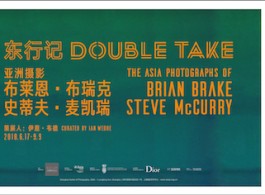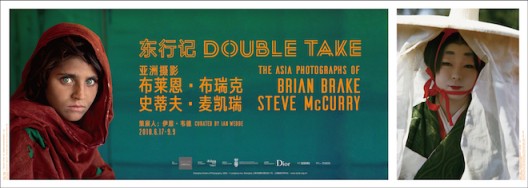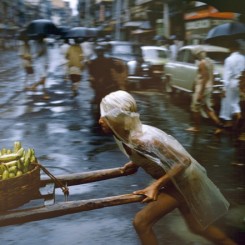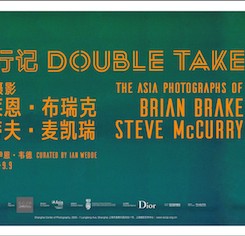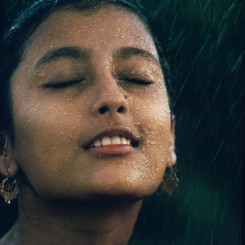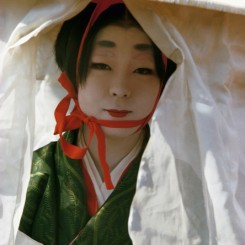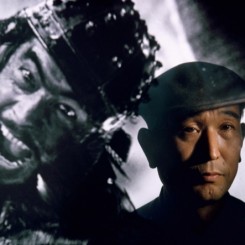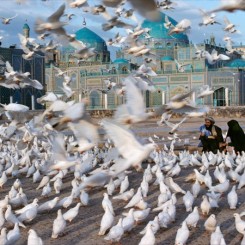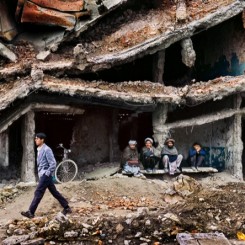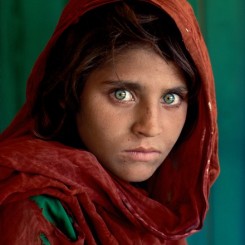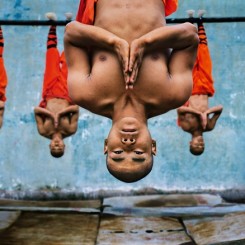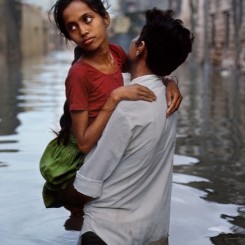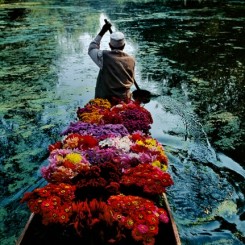Shanghai Center Of Photography
The launch of Life magazine in 1936 set the stage for a hugely influential approach to using and seeing photographs: the photo essay came to dominate – and direct – the social, economic, and political narratives that underscored the 20th century. So much so that, today, images as “the photograph” are an essential tool for conveying all manner of scenes, incidents, stories of daily life, human experience and personas. “Double Take” presents the work of two exemplary, and hugely influential 20th-century photo essayists, the documentary photographers Brian Brake and Steve McCurry. Both Brake and, twenty years later, McCurry made their reputations as visual storytellers providing eyewitness accounts of great events.
The career of New Zealand-born Brian Brake (1927 – 1988) was launched in 1957 with a first photo essay on China – a second followed in 1959 with Brake the only Western photographer present to cover the 10th Anniversary of the People’s Republic of China in Beijing.The work of American Steve McCurry (1950 – ) became a regular feature of National Geographic from the early 1980s, following the first publication in the New York Timesin 1979, of his photograph of the war in Afghanistan. Both men photographed the Indian monsoon — Brake in 1960, McCurry in 1983-1985 — which is where this exhibition begins.
“Double Take” also considers the work of these two renowned photographers from a contemporary perspective, raising critical issues about the West’s historical fascination with “exotic Asia”. What deeper stories are revealed by rereading these photographs today?
”Double Take” was initially developed from a proposal by New Zealand photography collector Jonathan Flaws to mark the 60th anniversary of Asia Society, New York. It was organized and first presented at the Society’s Hong Kong branch in 2016, and subsequently, under the auspices of the Auckland Arts Festival, at Te Uru Waitakere Contemporary Gallery, New Zealand, in 2017. All three iterations are curated by Auckland-based independent curator Ian Wedde, formerly Head of Art and Visual Culture at The Museum of New Zealand Te Papa Tongarewa 1994-2004.
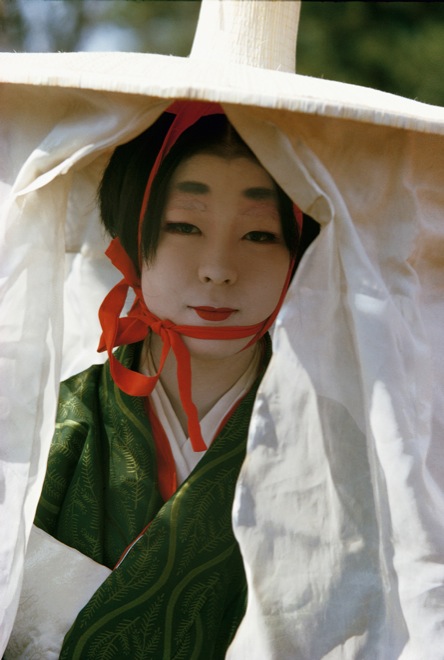
Brian Brake. Woman in Heian Period costume, Festival of the Ages, Kyoto, Japan, 1963. Collection Museum of New Zealand Te Papa Tongarewa, gift of Wai-man Lau, 2010.
布莱恩·布瑞克,《时代祭时身穿平安时代服饰的女士,日本京都》,1963。新西兰国家博物馆藏品。刘惠文先生于2010年捐赠。
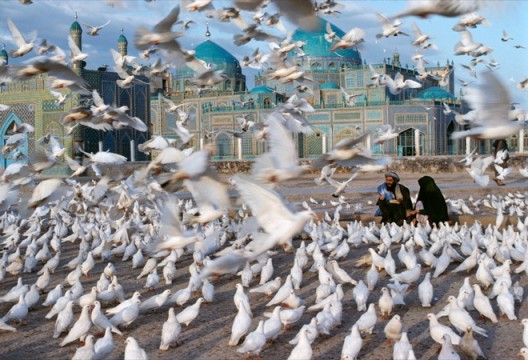
Steve McCurry. Blue Mosque, Mazar-i-Sharif, Afghanistan, 1991. © Steve McCurry.
史蒂夫•麦凯瑞,《蓝色清真寺,阿富汗马扎里沙里夫》, 1991 © 史蒂夫·麦凯瑞
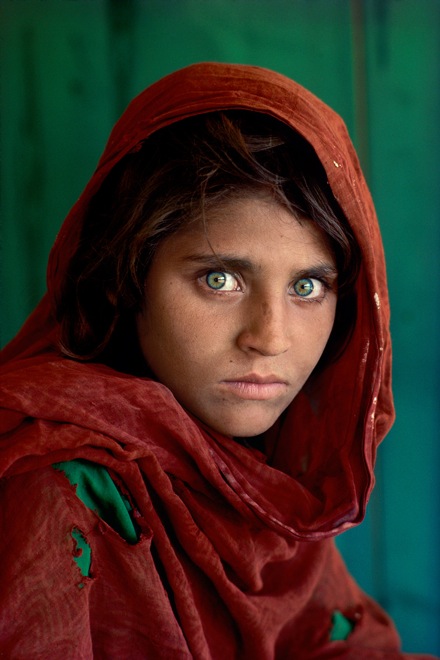
Steve McCurry. Sharbat Gula, “Afghan Girl”, at Nasir Bagh refugee camp near Peshawar, Pakistan, 1984. © Steve McCurry.
史蒂夫•麦凯瑞,《“阿富汗女孩”沙尔巴特•古拉,巴基斯坦白沙瓦附近的纳席巴难民营》,1984 © 史蒂夫•麦凯瑞
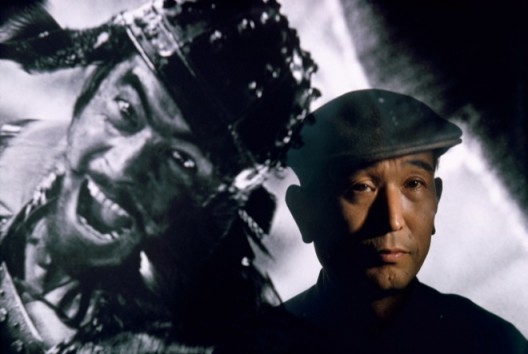
Brian Brake. Film director Akira Kurosawa standing before an image of his principal star, Toshiro Mifune, Tokyo, 1963. Collection Museum of New Zealand Te Papa Tongarewa, gift of Wai-man Lau, 2001.
布莱恩•布瑞克,《电影男主角三船敏郎影像前的黑泽明导演,日本东京》,1963。新西兰国家博物馆藏品。刘惠文先生于2001年捐赠。
Thanks
SCoP would like to thank Head of Gallery and Exhibition Dominique Chan and Assistant Curator Ashley Wu of the Asia Society, Hong Kong Center for initiating this leg of the exhibition in Shanghai. We are grateful to the Museum of New Zealand Te Papa Tongarewa as well as Steve McCurry and his team for their assistance with all preparations. We thank Dior for its enthusiastic support of SCoP and “Double Take”. Finally, our thanks go to the exhibition curator Ian Wedde for his input and oversight.
About the Photographers:
Brain Brake: Brian Brake was born in 1927 in Wellington, New Zealand, and was raised in the South Island where his boyhood photographs were of the spectacular local scenery. From 1945 to 1948, he worked in the studio of the portrait photographer Spencer Digby and was awarded an Associate of Britain’s Royal Photographic Society (ARPS) in 1947. From 1948 to 1954 he worked for New Zealand’s National Film Unit as a film cameraman and director. This training gave him a command of lighting and of narrative. After moving to London in 1954, he joined the Magnum Photo collective in 1955 and became an Asia specialist for the agency in 1956. His work in China in 1957, and as the only independent non-communist photographer at the tenth anniversary celebrations of the Peoples’ Republic in 1959, made him one of the most sought-after photojournalists of his time.
His “Monsoon” photo-essay for Life magazine in 1961 was published in a dozen major international magazines — the photograph of “Monsoon Girl” (Aparna das Gupta) became world-famous. Brake left Magnum in 1967 and began to shift his emphasis towards books and film, and away from photojournalism for magazines such as Life.
Brake was based in Hong Kong from 1962 until 1976 and established his film company, Zodiac, there. Much of his later work in Asia involved photographing Asian works of art for publications such as (with William Warren) The house on the Klong: The Bangkok home and Asian Art Collection of James Thompson (Weatherhill, New York, 1968) and The Sculpture of Thailand (The Asia Society, New York, 1972). He returned to live in New Zealand in 1976 and continued to work until his death in 1988.
Steve McCurry: The American photographer Steve McCurry was born in Philadelphia in 1950. He saw Brian Brake’s 1961 Monsoon photo-essay in Life magazine when he was eleven years old. It was one of the factors that inspired him to become a photographer. He studied cinematography at Pennsylvania State University before going on to work as a photographer for a regional newspaper, Today’s Post, in 1974.
In 1978 McCurry made the first of many trips to India, and got his breakthrough by entering Afghanistan in 1979 and photographing the rebel Mujahideen forces who were resisting the Soviet-backed government. A photograph of Mujahideen observing an enemy convoy was published in the New York Times in September 1979. He went on to cover the war for Time magazine, and was awarded the Robert Capa Gold Medal for “best published photographic reporting from abroad requiring exceptional enterprise and courage”. In 1984 he was back in Afghanistan and photographed a young Afghan refugee girl, Sharbat Ghula, who would become famous as “Afghan Girl”. In 1986 he joined Magnum Photos.
McCurry worked on his own monsoon project, which was published in National Geographic in 1984 and as a book in 1988. His career has had a special focus in Asia, where he’s photographed for forty years. Like Brian Brake, he has worked for many of the leading international magazines and journals, including National Geographic, New York Times Magazine, and Life. Unlike Brake, much of his Asian work has been published in books, including The Imperial Way: by Rail from Peshawar to Chittagong (with Paul Theroux, 1987)), Portraits (1999), South Southeast (2000), The Path to Buddha: A Tibetan Pilgrimage (2003), India (2015), and forthcoming in November 2018, Steve McCurry – A Life in Pictures: Forty Years of Photography, among others. McCurry has also exhibited widely, and maintains a large and complex Instagram site.
About the Curator:
Ian Wedde ONZM
The author and curator Ian Wedde was born in New Zealand in 1946 and has lived in Bangladesh, England, Jordan, France and Germany. He began his career as a curator with the New Zealand component of Il Sud Del Mondo: l’Altra Arte Contemporanea, in Marsala, Sicily, 1989. From 1994 to 2004 Wedde was Head of Art and Visual Culture at the newly established Museum of New Zealand Te Papa Tongarewa. His art publications include a monograph on the New Zealand artist Bill Culbert, Bill Culbert: Making Light Work (Auckland University Press, N.Z., /RGAP, U.K., 2009), New Zealand’s artist at the Venice Biennale in 2013. In 2010 he was made an Officer of New Zealand Order of Merit (ONZM) in the Queens Birthday Honours. Between 2011 and 2013 he established and taught a postgraduate course in Art Writing and Curatorial Practice at the University of Auckland. His writing on museums and exhibitions has been widely published, most recently in the forthcoming Curatopia: museums and the future of curatorship, eds. Philipp Schorch and Conal McCarthy (University of Manchester Press, December 2018).

